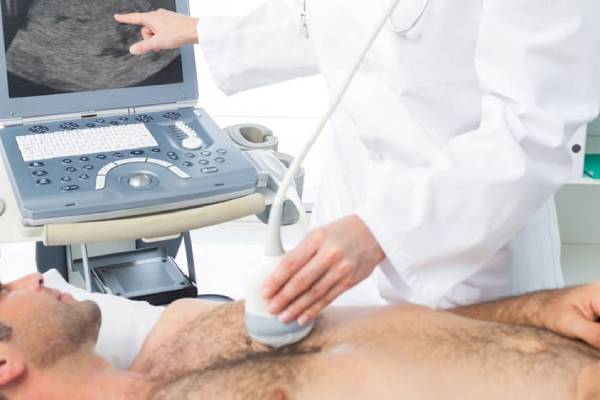-
020-2997242
Please feel free to contact our friendly reception staff with any general or medical enquiry.
Make Appointment - +918459612363
- Location: Pune, Maharashtra
- Mon - Fri: 8:00 am - 7:00 pm

Interventional Cardiology

Interventional cardiology is that branch of science in which cardiologists use interventional procedures to either repair or replace the heart valves. Individuals are preferring interventional procedures over traditional surgery because of the fewer amount of scars and pain.
Interventional cardiology includes some of the following treatments :
The types of echocardiography include :-
- Primary Angioplasty - this is the treatment given to patients who have suffered from myocardial infarction or heart attack. People who are suffering from severe coronary heart diseases require this treatment if the condition worsens, This procedure involves widening the coronary artery walls where cholesterol deposits are present. The narrowed areas of the artery walls are widened by using a long, flexible tube (catheter) and placing it in between the plaque deposits. The catheter is inserted into the main blood vessel of the lower arm and passed carefully into the aorta (the artery that provides blood to the heart muscles from its blood supply). A balloon is placed at the tip of the tube in such a way that when it is blown, it forces the narrowed areas of the artery to wide open. This clears the passage of the coronary artery walls, allowing blood to flow to the heart.
- Valvuloplasty - This treatment is given to infants who are suffering from heart disease. It is done by placing a catheter through the blood vessel into the heart. The balloon is placed at the tip of the catheter. When it is blown, it forces the valve to open. The balloon valvuloplasty is done in mitral, aortic, or pulmonary valves.
- Coronary Thrombectomy - This treatment involves removing a blood clot(thrombus) from the blood vessel. The formation of blood clots can take place when a person has a heart attack. When the plague deposits in the heart or brain, the clotting process starts which obstructs the blood flow to the heart muscle. Since the heart muscle is not getting the oxygenated blood, the heart muscle stops functioning or dies.
- Alcohol septal ablation - This procedure involves injecting alcohol(ethanol) into the part where the heart muscle has thickened. It kills the cells of the muscle and shrinks the diseased tissue and restores blood flow to the heart muscle.
- Atherectomy - This treatment provides an alternative to coronary angioplasty where it cuts the plague from the wall of the coronary arteries, instead of pushing it into the wall.
- Heart valve replacement - the valve is replaced either surgically in case of surgical aortic valve replacement or transcatheter aortic valve replacement where a catheter is used to replace the valve.
- Cardiac Imaging - Techniques of cardiac imaging like echocardiography, a device called a transducer is placed on the top of the chest and ultrasonic waves are sent to the heart bounce off and show the live image of the heart, using a monitor. Intravascular ultrasound uses a catheter instead of a transducer to capture the images of coronary arteries. This helps the specialists to see whether the blood flow is obstructed or not. Coronary angiography also uses a catheter but before inserting it in the body through wrists or legs, it injects a dye into the bloodstream to create X-ray images of the coronary arteries.
Standard work of an Interventional Cardiologist
- An interventional cardiologist typically examines their patient's medical history and asks them questions regarding their recent health complications or changes.
- The specialist will perform a physical examination on the patient by checking their height, weight, blood pressure, heartbeat rate.
- After analyzing the patient's questions and exam, the specialist might order a few tests like an ultrasound, electrocardiogram, biopsy, chest X-ray, chest stress tests, and so on.
- Depending on the test results, the specialist might perform surgery or transplantation. For example, if you are diagnosed with the possibility of heart disease, the cardiologist will most likely monitor your blood pressure and cholesterol levels. If you have heart disease, the specialist will perform either an open heart surgery or cardiac catheterization, depending on your choice
Who And When You Should See An Interventional Cardiologist?
- Your doctor is responsible for monitoring your health. He/she is responsible for keeping your blood pressure, blood sugar, and cholesterol at normal levels. However, if your doctor suspects the presence of a blockage or narrowing of the blood vessels, then your doctor might consult you with an interventional cardiologist so that you are treated as fast as possible.
- If your blood pressure continues to rise or if your cholesterol levels have not reduced, then your doctor is most likely to consult you with an interventional cardiologist so that they run a few tests and analyze your condition.
- You should see an interventional cardiologist if you are facing symptoms like severe chest pain, shortness of breath, swelling of feet and ankles, or skin turning grayish-blue.
- If, while doing an electrocardiogram, you experience irregular heartbeats or if the specialist sees any unusual changes in the electrical activity, this indicates that you might be facing heart complications like narrowing of the artery or blockage in the walls of the coronary arteries.
- If your condition worsens, immediately call 911. After taking you to the emergency room, the interventional cardiologist or cardiac surgeon might analyze your condition and shift you to the ICU.
Diseases Treated By Interventional Cardiologists
Interventional cardiologists diagnose and treat a vast spectrum of heart diseases, which includes :
- Coronary artery disease - a disease caused in the heart muscle due to reduction of blood flow in the heart muscle caused by narrowing of the arteries or deposition of cholesterol in the walls of the coronary arteries
- Peripheral artery disease - caused due to abnormal narrowing of the arteries that supply blood to the heart. Symptoms include bluish skin, ulcers, leg pain.
- Aortic aneurysm - a disease that causes enlargement of the aorta (The aorta is responsible for transporting blood to other organs of the body). It is mainly caused due to smoking, trauma, hypertension(high blood pressure). Symptoms include leg numbness, stomach pain, back pain, etc.
- Cardiomyopathy - a disease that affects the heart muscle. Symptoms include shortness of breath, swelling of ankles, fatigue, irregular heartbeat.
- Arrhythmias - irregular heartbeat
- Heart failure - failure of the heart to pump blood. Symptoms include congestion, where fluid develops in the tissues of the lungs and other parts of the body, shortness of breath, chest pain, fatigue, swelling of legs.
- Pulmonary heart disease - disease involves failure of the pulmonary valve which is responsible for transporting deoxygenated blood to the lungs.
- Valvular heart disease - disease involves a failure in the functioning of the valves of the heart. This includes mitral regurgitation, aortic stenosis, tricuspid regurgitation, mitral stenosis, aortic regurgitation, etc
Dr. Swapnil Mate's Cardiology clinic has a multidisciplinary interventional cardiology team that works with cardiac patients and ensures them that their treatment will go smoothly( applied to those who are scared of surgeries and other treatments). They patiently work with individuals and cater to their needs. Consult Dr. Swapnil Mate for the best medical assistance.